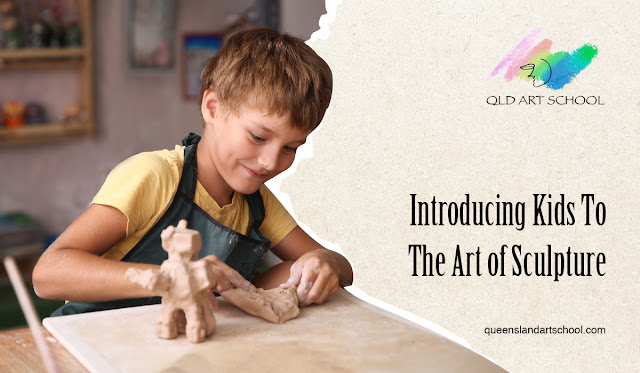Introducing Kids To The Art of Sculpture
Kids from a young age enjoy activities that spark their senses. They are naturally curious about the world and love to play with all manner of things. Play-Doh, crayons, paints, and paper stimulate their senses and engage them creatively. Parents insist on children playing with Play-Doh because it fine-tunes their motor skills, improves hand-to-eye coordination, and builds strength in their arms.
But did you know that working on Play-Doh is the first step towards the art of sculpture?
Sculpting is a beautiful and expressive way of creating 3D art. Creating 3-dimensional figures and objects made of pliable materials like wood, clay, marble, and wax is the basic form of sculpting.
As one of the leading Brisbane kids' art classes, Queensland Art School offers a course on sculpting in various media. Check out how sculpting is introduced to children ages 5 and above.
How To Introduce Sculpting To Children
The first thing to explain to children is that sculpture is 3D. You can see all around it. Sculpting can be started by imitating. Ask children to imitate still-life objects that catch their fancy. Clay is the perfect medium for sculpting for beginners. 5-year-olds can easily work on clay and enjoy forming beautiful things.
Once children have gotten the hang of sculpting with their hands, they can be introduced to tools and other materials. They can be taught anatomy and the human form so that their sculpting looks natural and advanced.
However, sculpting isn’t all about clay. Introducing children to beads, pasta, feathers, paper, cardboard, and other materials also helps children push boundaries in the art of sculpting.
Are There Any Benefits Of Sculpting?
Sculpting is particularly relaxing and soothing to the mind. Not only do children feel their minds becoming calm and focused, but the activity also helps to create a sense of peace.
Children who learn to sculpt, train their hands daily. They are more skilled with their fingers and hands and are adept at using them for other activities.
Sculpting builds a sense of accomplishment in a child. After creating a piece, children feel proud of the work they have executed. The primary benefit of sculpting is that children think in 3D and develop spatial knowledge.
Wrapping Up
Several Brisbane kids’ art classes offer a course on sculpting and art. The courses are designed to teach children the rudiments of the subject and help them build the skills they will as they explore a future in sculpting.

Comments
Post a Comment